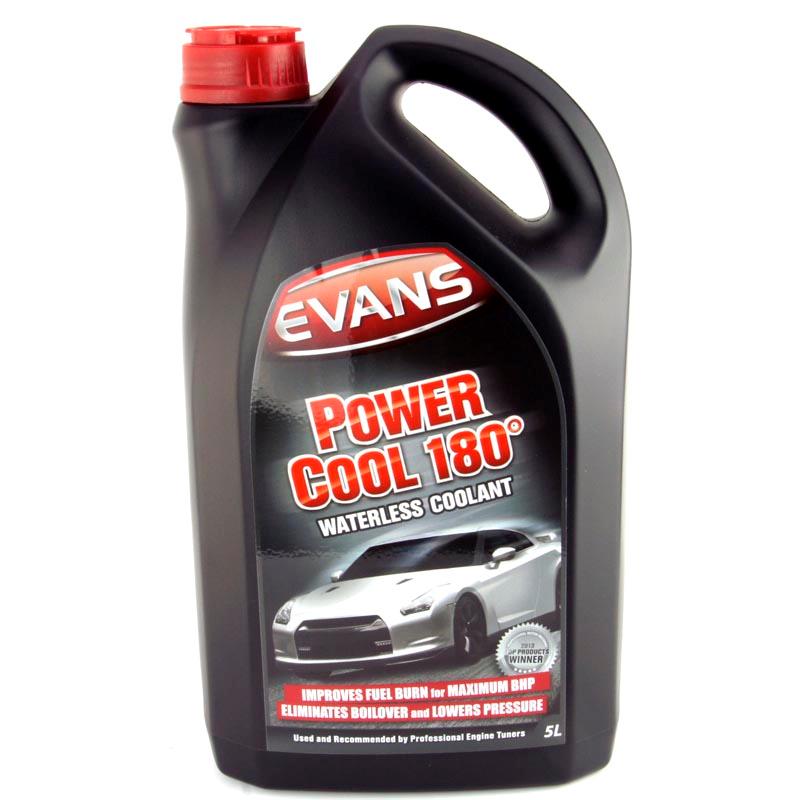
First and foremost, all existing water-based coolant must be drained from the system. Once you’ve decided the switch to waterless coolant is the right choice, there are some very specific steps you must follow for a seamless transition.
EVANS COOLANT HOW TO
How to Convert to Waterless CoolantĮvans Cooling High Performance Waterless Engine Coolant No CorrosionĪlthough corrosion inhibitors have evolved over the years, current water-based antifreeze formulations regularly fail to prevent cavitation, oxidation, and galvanic action that can damage pumps, radiators, and other metal components. Corrosion build-up, inhibitor drop-out, and lime-scale precipitation significantly reduce heat transfer efficiency and accelerate overheating.Įvans waterless coolants prevent corrosion in a cooling system. Because Evans Cooling Waterless Coolant is much less likely to vaporize, it reduces this stress and can eliminate the expense of replacing ruptured hoses or damaged components. This puts stress on hoses, connections, and other components within the cooling system. When coolant vaporizes, it creates added pressure within the cooling system. Oh yeah - and since there’s no water in the coolant, you never have to worry about boil-over or after-boil, either.

And since the 375-degree boiling point is considerably higher than the operating temperature of most engines, any localized vapor is absorbed back into nearby coolant, which remains way below its boiling point. The higher boiling point of Evans waterless coolant ensures the coolant remains a liquid at all times, maintaining effective cooling.
Leaks due to cylinder head surface warping. Cavitation when combined with pressure drops in the water pump. Erosion caused by pitting on the cylinder heads, pump, and other areas. Reduced combustion efficiency (loss of power). This overheating and thermal stress on metal parts can lead to: This makes the metal even hotter, worsens the overheating, and can potentially lead to cylinder head warping and detonation. What’s more, localized vapor pockets can build up around these hot spots and actually create a barrier between the hot surface and the coolant, preventing the necessary heat transfer. This vapor is most likely to occur around the hottest parts of the cylinder head - right where the cooling is needed most. When water reaches its relatively low boiling point, it begins to vaporize. Since vapor is about 97 percent less effective than liquid at conducting heat, it reduces the coolant’s overall ability to do its job. While water begins to boil at 212 degrees F - very close to the operating temperature of an engine - Evans uses a propriety liquid that it claims has a boiling point of over 375 degrees F. What’s worse than that plume of steam coming from your hood? How about seeing the coolant actually boil over and overflow from your radiator? If you’ve ever owned an old car with a non-pressurized cooling system, you may have enjoyed the experience once or twice.Įvans Cooling says it has eliminated the overheating problem altogether by removing water from its coolant formula. Evans Cooling Waterless Solutionīy eliminating water from its coolant formula, Evans Cooling says its waterless coolant offers three main advantages over traditional water-based coolant: No Overheating The company has developed a line of waterless coolants that consist of a propriety, water-free base fluid that doesn’t have the physical and chemical limitations of water. In other words, traditional water-based coolants are susceptible to traditional cooling system problems.Īccording to Evans Cooling, there’s a better, more effective way to cool your engine - and it doesn’t include water. While these water-based coolants have done an admirable job of cooling, history shows they can be prone to overheating, boil-over, and after-boil conditions at high operating temperatures. 
Warning: PDOStatement::execute(): SQLSTATE: Column not found: 1054 Unknown column 'active' in 'where clause' in /home/evansuk/public_html/class/ the 1930s, hot rodders and performance car enthusiasts have relied primarily on engine coolants made from a mix of ethylene glycol, water, and corrosion inhibitors. Waterless coolant for specialist applications Waterless engine coolant for heavy duty diesels

Waterless coolant for classic and modern engines Warning: PDOStatement::execute(): SQLSTATE: Column not found: 1054 Unknown column 'active' in 'where clause' in /home/evansuk/public_html/class/ on line 20 Waterless engine coolant for performance engines







 0 kommentar(er)
0 kommentar(er)
